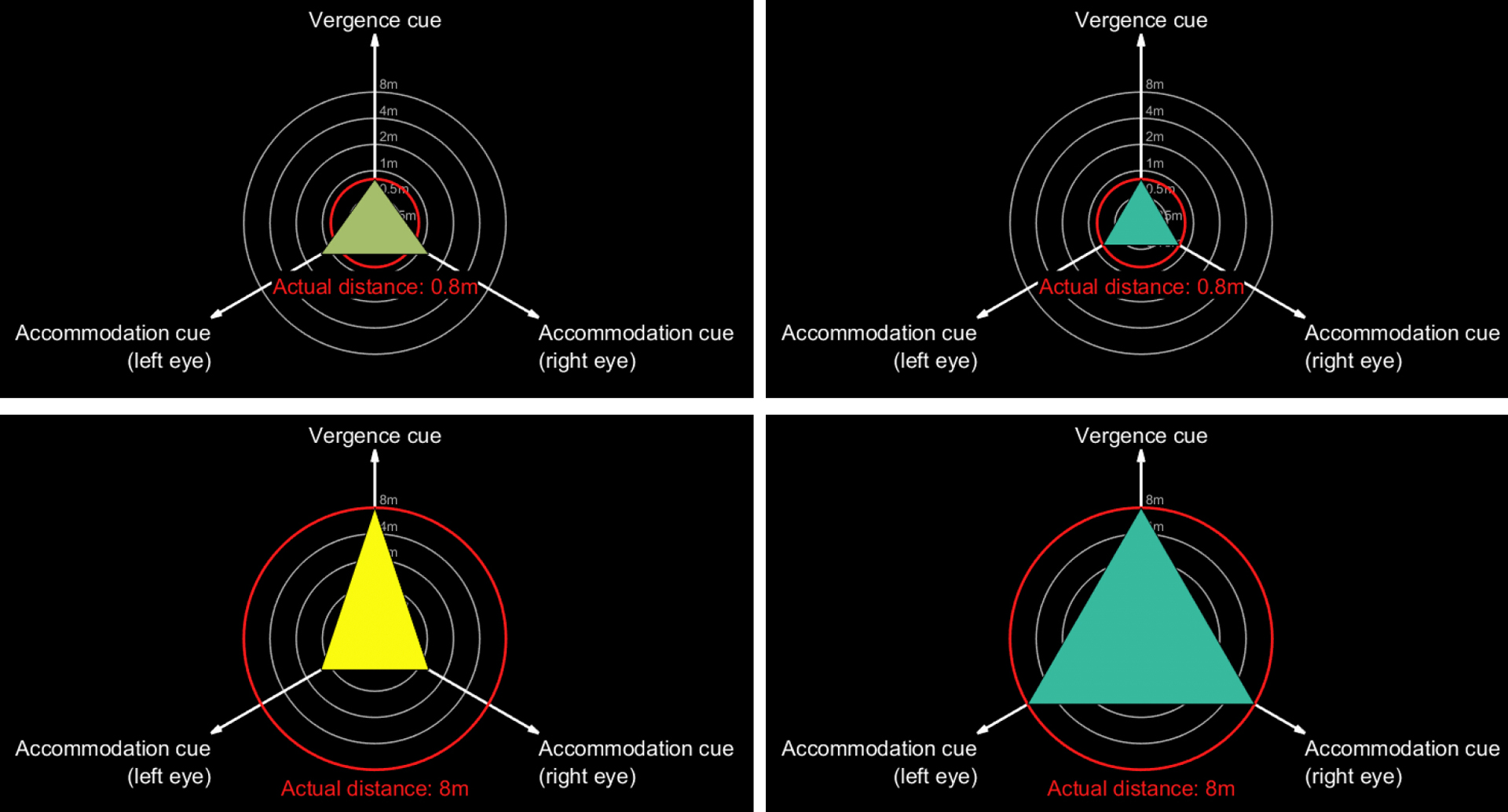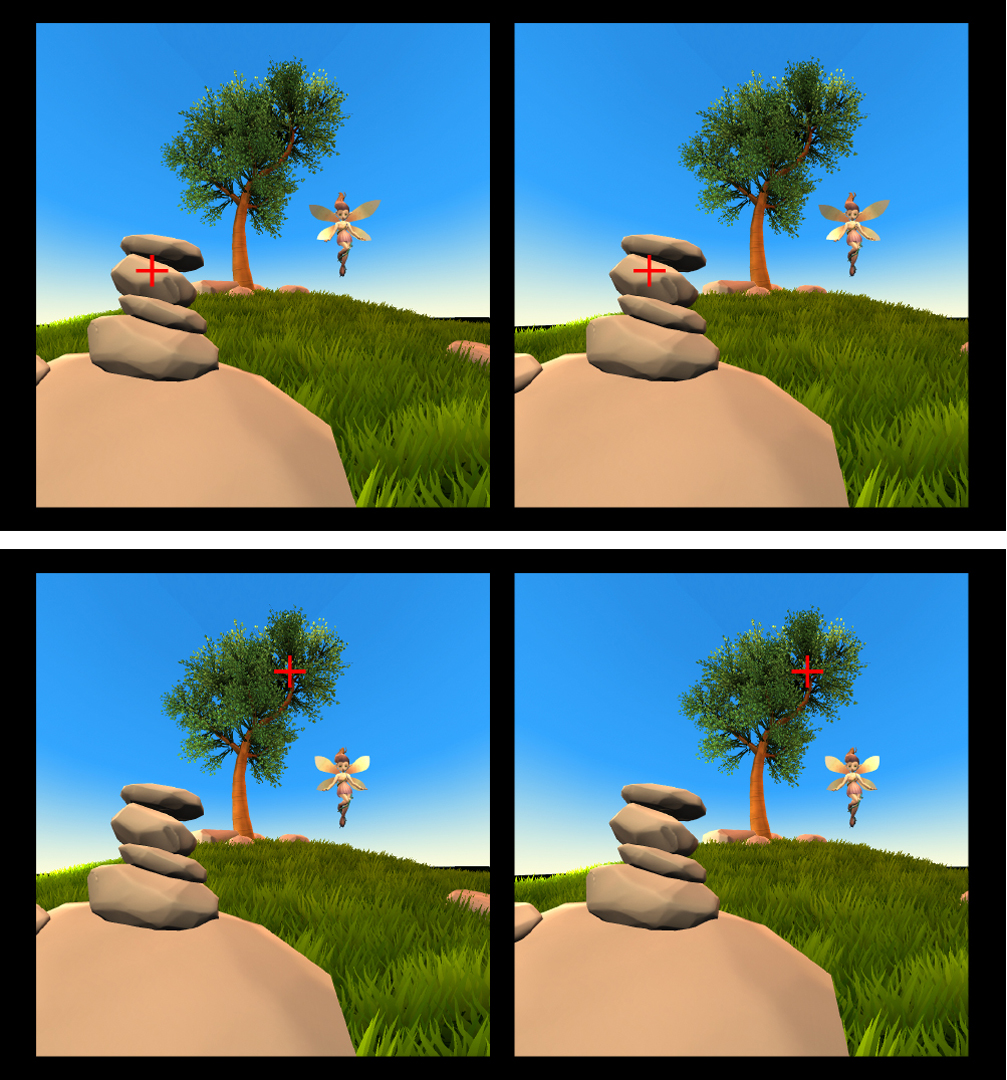“Adaptive Dynamic Refocusing: Toward Solving Discomfort in Virtual Reality” by Laont and Hasnain
Notice: Pod Template PHP code has been deprecated, please use WP Templates instead of embedding PHP. has been deprecated since Pods version 2.3 with no alternative available. in /data/siggraph/websites/history/wp-content/plugins/pods/includes/general.php on line 518
Conference:
- SIGGRAPH 2017
-
More from SIGGRAPH 2017:
Notice: Array to string conversion in /data/siggraph/websites/history/wp-content/plugins/siggraph-archive-plugin/src/next_previous/source.php on line 345

Notice: Array to string conversion in /data/siggraph/websites/history/wp-content/plugins/siggraph-archive-plugin/src/next_previous/source.php on line 345

Type(s):
Entry Number: 01
Title:
- Adaptive Dynamic Refocusing: Toward Solving Discomfort in Virtual Reality
Presenter(s):
Description:
We present an approach for eliminating the vergence-accommodation conflict, a fundamental cause of discomfort in today’s Virtual Reality. We replace traditional lenses in a head-mounted display with a focus-adjustable optical system which provides accommodation cues consistent with the true depth of an observed object. In addition, we take into account the eyeglasses prescription of the user to enable the use of Virtual Reality without eyeglasses. We integrate our system into a commercial headset and demonstrate that solving the vergence-accommodation is possible in a compact form factor without affecting the resolution.
References:
Kurt Akeley, Simon J Watt, Ahna Reza Girshick, and Martin S Banks. 2004. A stereo display prototype with multiple focal distances. In ACM transactions on graphics (TOG), Vol. 23. ACM, 804–813.
David M. Hoffman, Ahna R. Girshick, Kurt Akeley, and Martin S. Banks. 2008. Vergence-accommodation conflicts hinder visual performance and cause visual fatigue. Journal of Vision 8, 3 (2008), 33.
H. Hua. 2017. Enabling Focus Cues in Head-Mounted Displays. Proc. IEEE 99 (2017).
R. Konrad, E.A Cooper, and G. Wetzstein. 2016. Novel Optical Configurations for Virtual Reality: Evaluating User Preference and Performance with Focus-tunable and Monovision Near-eye Displays. Proceedings of the ACM Conference on Human Factors in Computing Systems (CHI€16) (2016).
Gregory Kramida. 2016. Resolving the vergence-accommodation conflict in head-mounted displays. IEEE TVCG 22, 7 (2016), 1912–1931.
Pierre-Yves Laffont, Tobias Martin, Markus Gross, Wei De Tan, CT Lim, Affa Au, and Rick Wong. 2016. Rectifeye: A Vision-correcting System for Virtual Reality. In SIGGRAPH ASIA 2016 VR Showcase.
Douglas Lanman and David Luebke. 2013. Near-eye light €eld displays. ACM Transactions on Graphics (TOG) 32, 6 (2013), 220.
Sheng Liu, Dewen Cheng, and Hong Hua. 2008. An optical see-through head mounted display with addressable focal planes. In Mixed and Augmented Reality, 2008. ISMAR 2008. 7th IEEE/ACM International Symposium on. IEEE, 33–42.
Sheng Liu and Hong Hua. 2009. Time-multiplexed dual-focal plane head-mounted display with a liquid lens. Optics letters 34, 11 (2009), 1642–1644.
Gordon D Love, David M Hoffman, Philip JW Hands, James Gao, Andrew K Kirby, and Martin S Banks. 2009. High-speed switchable lens enables the development of a volumetric stereoscopic display. Optics express 17, 18 (2009), 15716–15725.
N. Padmanaban, R. Konrad, T. Stramer, E.A. Cooper, and G.Wetzstein. 2017. Optimizing virtual reality for all users through gaze-contingent and adaptive focus displays. Proceedings of the National Academy of Sciences (2017).
Takashi Shibata, Takashi Kawai, Keiji Ohta, Masaki Otsuki, Nobuyuki Miyake, Yoshihiro Yoshihara, and Tsuneto Iwasaki. 2005. Stereoscopic 3-D display with optical correction for the reduction of the discrepancy between accommodation and convergence. Journal of the Society for Information Display 13, 8 (2005), 665–671.
Shinichi Shiwa, Katsuyuki Omura, and Fumio Kishino. 1996. Proposal for a 3-D display with accommodative compensation: 3DDAC. Journal of the Society for Information Display 4, 4 (1996), 255–261.
Shiro Suyama, Munekazu Date, and Hideaki Takada. 2000. .Three-dimensional display system with dual-frequency liquid-crystal varifocal lens. Japanese Journal of Applied Physics 39, 2R (2000), 480.
C. Vienne, L. Sorin, L. Blondé, Q. Huynh-.u, and P. Mamassian. 2014. Effect of the accommodation-vergence conflict on vergence eye movements. Vision Research 100 (2014), 124–133.
Keyword(s):
- vision correction
- vergence-accommodation conict
- depth perception
- virtual reality discomfort
Additional Images:








